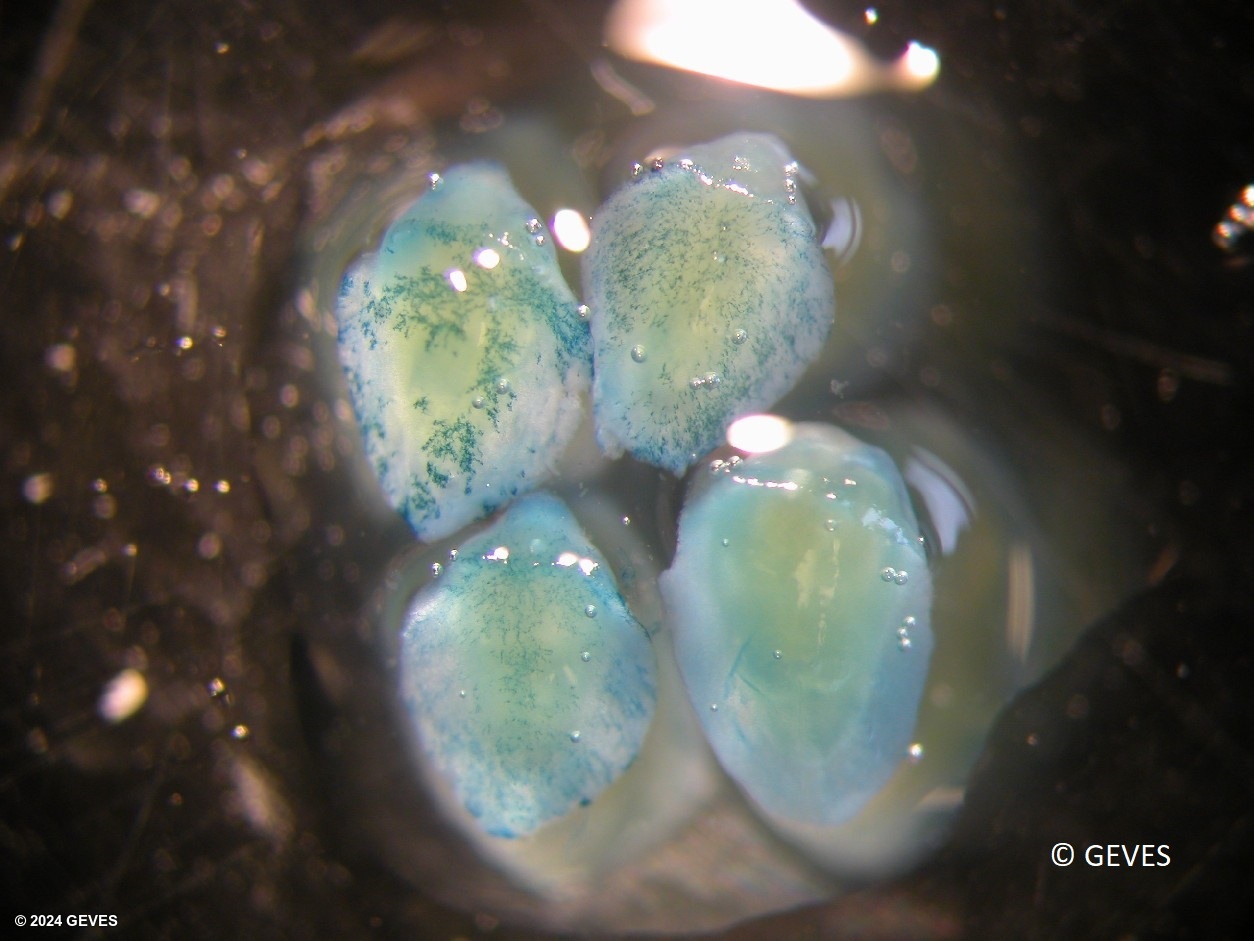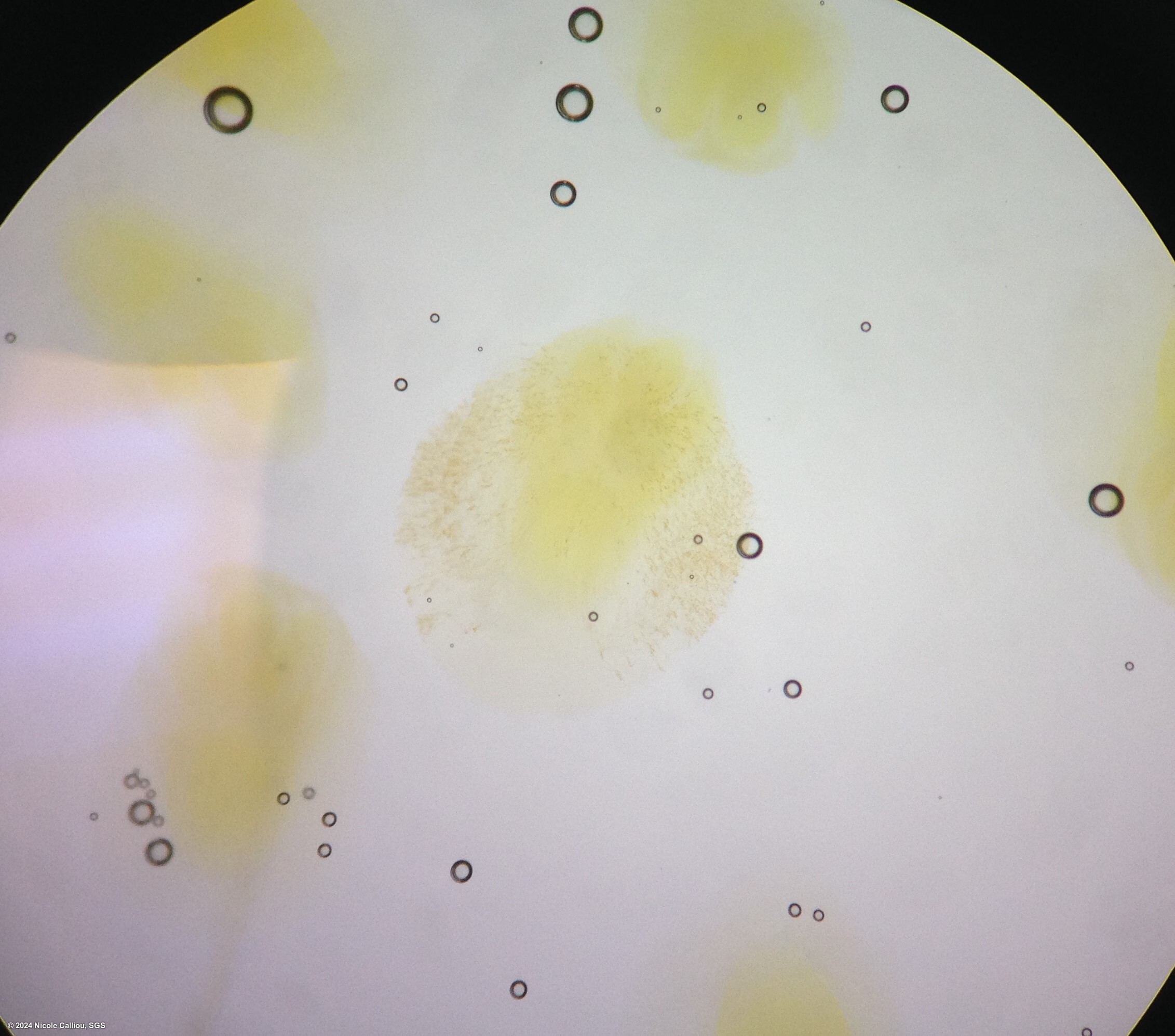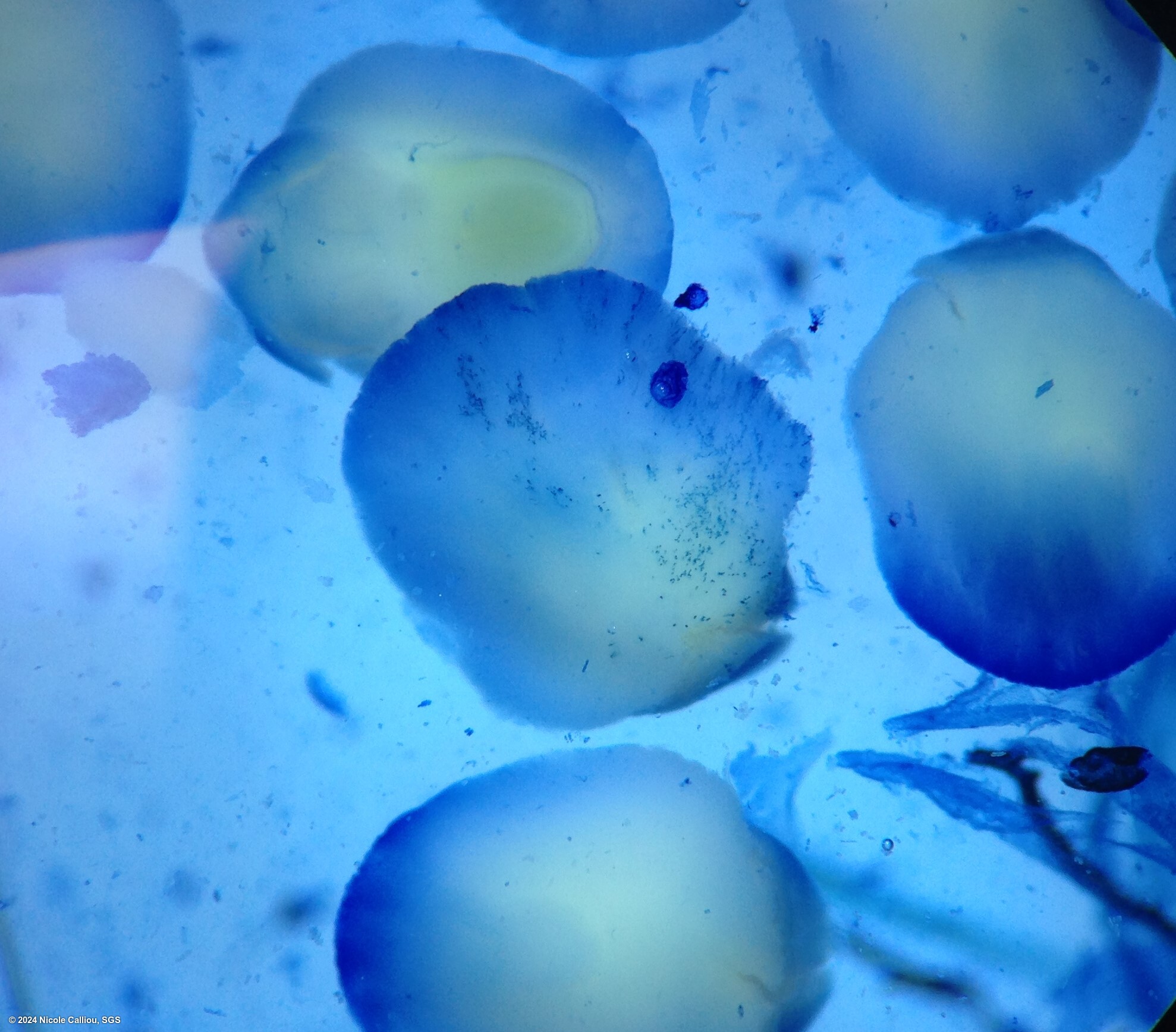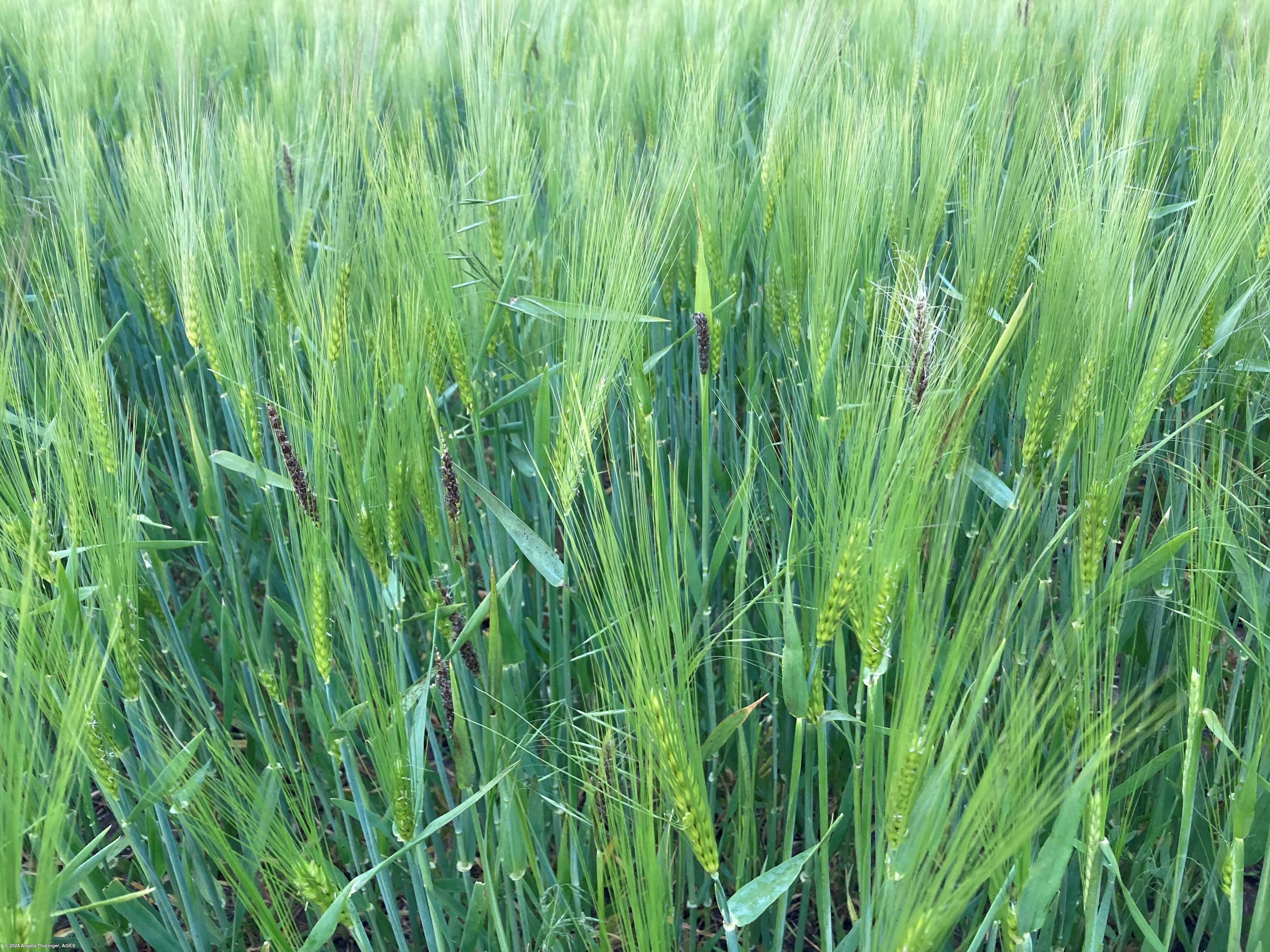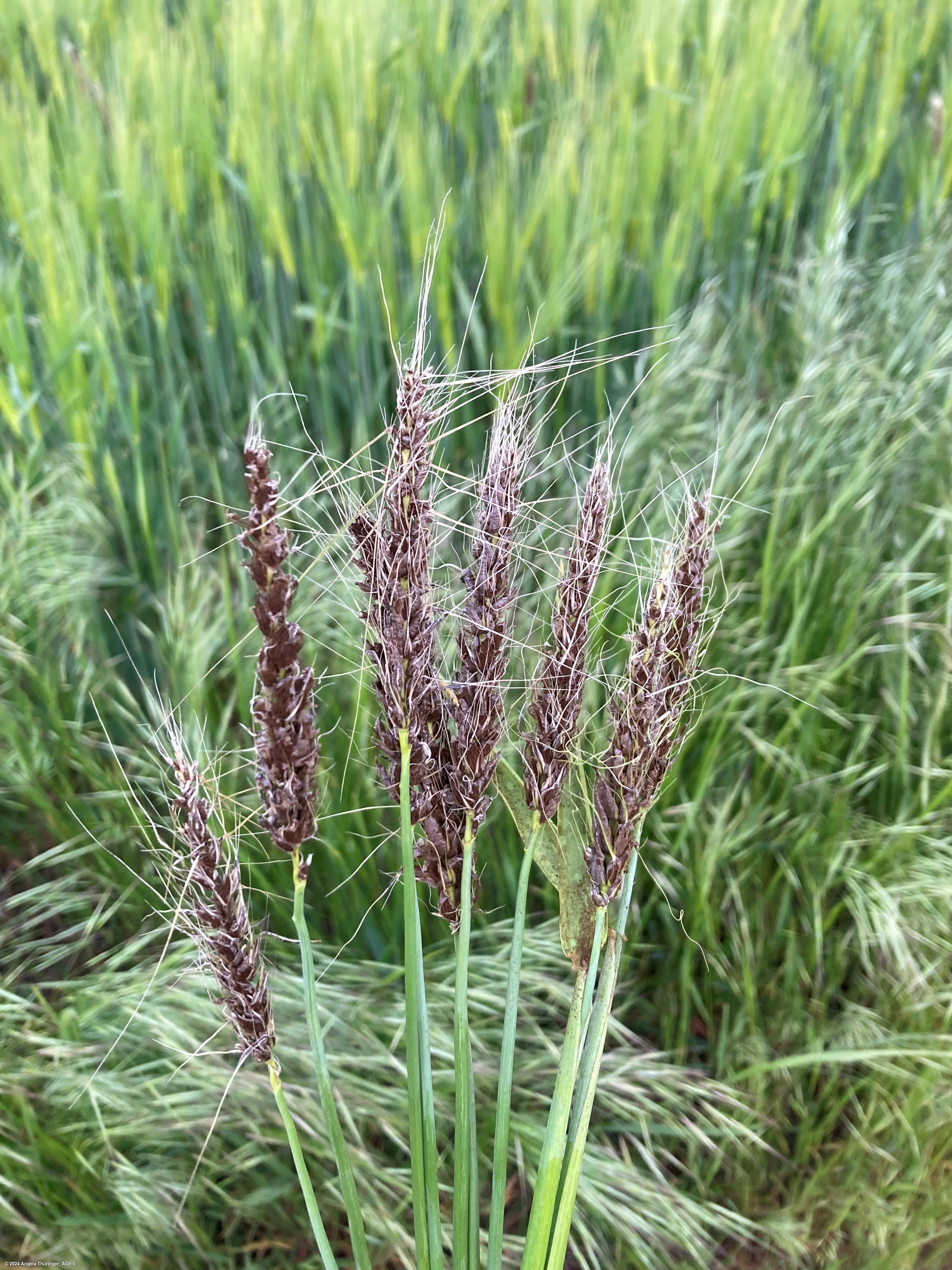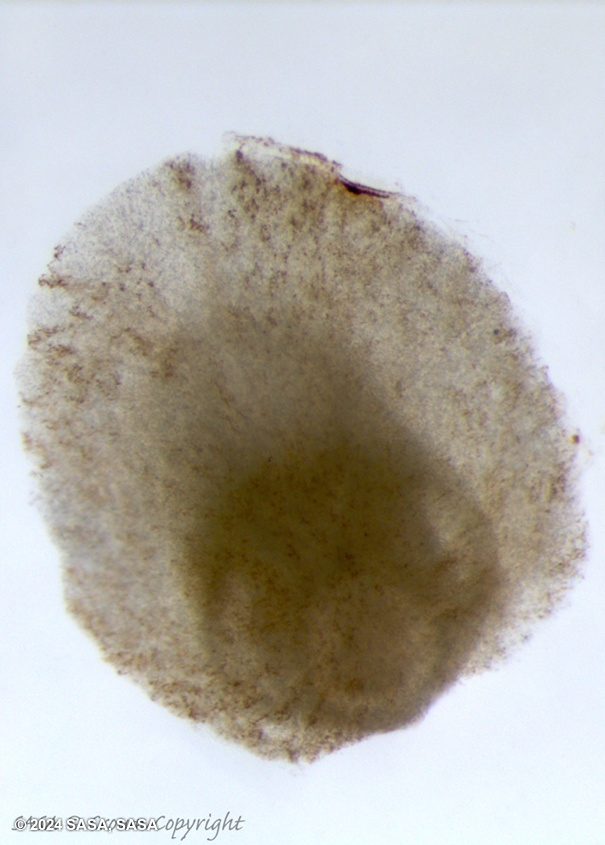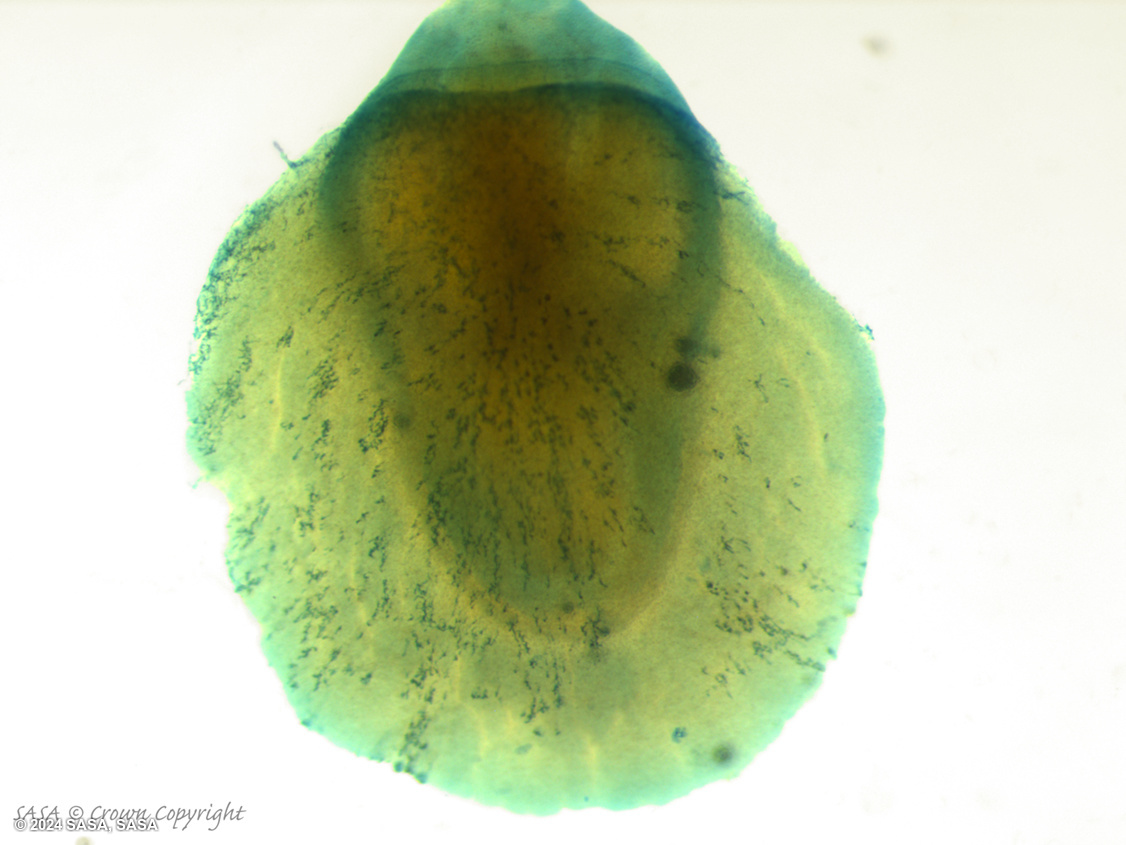Ustilago nuda
Overview
|
Scientific name
|
Ustilago nuda |
|
Genus
|
Ustilago |
|
EPPO code
|
USTINH |
|
Common name
|
True loose smut |
|
Synonyms
|
Ustilago nuda var. hordei |
Description
Ustilago nuda in the lab is observed by dehulling the seed and isolating the embryo, and looking for distinctive mycelium inside the embryo (ISTA Method 7-013 or CFIA M&P section 5.0). When observing under x16-25 magnification with substage illumination, the mycelium is a golden brown if left undyed. Or if the embryo has been stained with Trypan blue or Methyl blue, then they will appear to be a dark blue in the lighter blue embryo background.
Mycelium is approximately 3um thick, golden brown in colour and visible without stain (although staining is an aide that can assist the pathologist). Infection may vary from a few strands of short hyphae to complete invasion of the scutellum tissues, often denser on one side.
Other occasional fungi may occur in the scutellum tissues, but are usually darker in color and quite distinct. When cell walls becoem discolored, they may be confused with mycelium of U. nuda, but this can be checked with magnification at x50 or higher.
In the field, U. nuda is contained within the seed, and the shoot will be infected upon germination. The fungus will grow inside the plant, and spores will be produced instead of kernels. They will be covered by a very thin membrane that will easily break and release the teliospores into the neighboring plants' florets, to infect the next seed. The thin membrane covers dark, dusty brown spores, which will be blown away easily, leaving a bare rachis.
